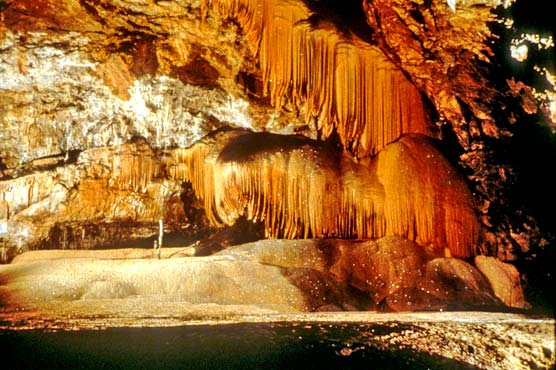The National Park Service (NPS) has approved a plan to improve the visitor services in the Crystal Cave area of Sequoia National Park. National Park Service Pacific West Regional Director Laura Joss approved the project by signing a finding of no significant impact statement (FONSI) in February. The public was provided a chance to review the proposed plan in late 2015.
The approved plan includes repairing the damaged cave access trail and trail features, replacing the existing visitor information kiosk and gift shop, and improving the information and displays at the trailhead area and along the cave access trail. The NPS will also be rehabilitating the picnic area near the trailhead and installing new comfort stations in the area. The plan does not propose to change the trail inside the cave, or the types and number of cave tours offered to visitors.
Dan Blackwell, acting superintendent for Sequoia and Kings Canyon National Parks shared, “We are excited to be moving forward on this wonderful project. Crystal Cave is one of the highlights of a visit to these parks. The proposed improvements will go a long way in protecting this environment.”
“The Crystal Cave visitor experience offers an introduction to the underground ecosystems in the parks. There are hundreds of known caves in Sequoia and Kings Canyon National Parks and Crystal Cave is the only one open for public tours. It provides a learning experience for visitors while, congruently, is protected by the park staff who works carefully to manage this beautiful cave. This project is going to be a great improvement to the area,” said Mark Tilchen, executive director for the Sequoia Parks Conservancy.
Crystal Cave has been one of the most popular visitor destinations in Sequoia and Kings Canyon National Parks since it opened for public tours in 1940. The cave is visited by an average of 51,000 people each summer season. No major work has occurred to the area’s facilities in more than 30 years. This project will accomplish needed repairs to provide an improved visitor experience, while protecting the area’s important cultural and natural resources.

